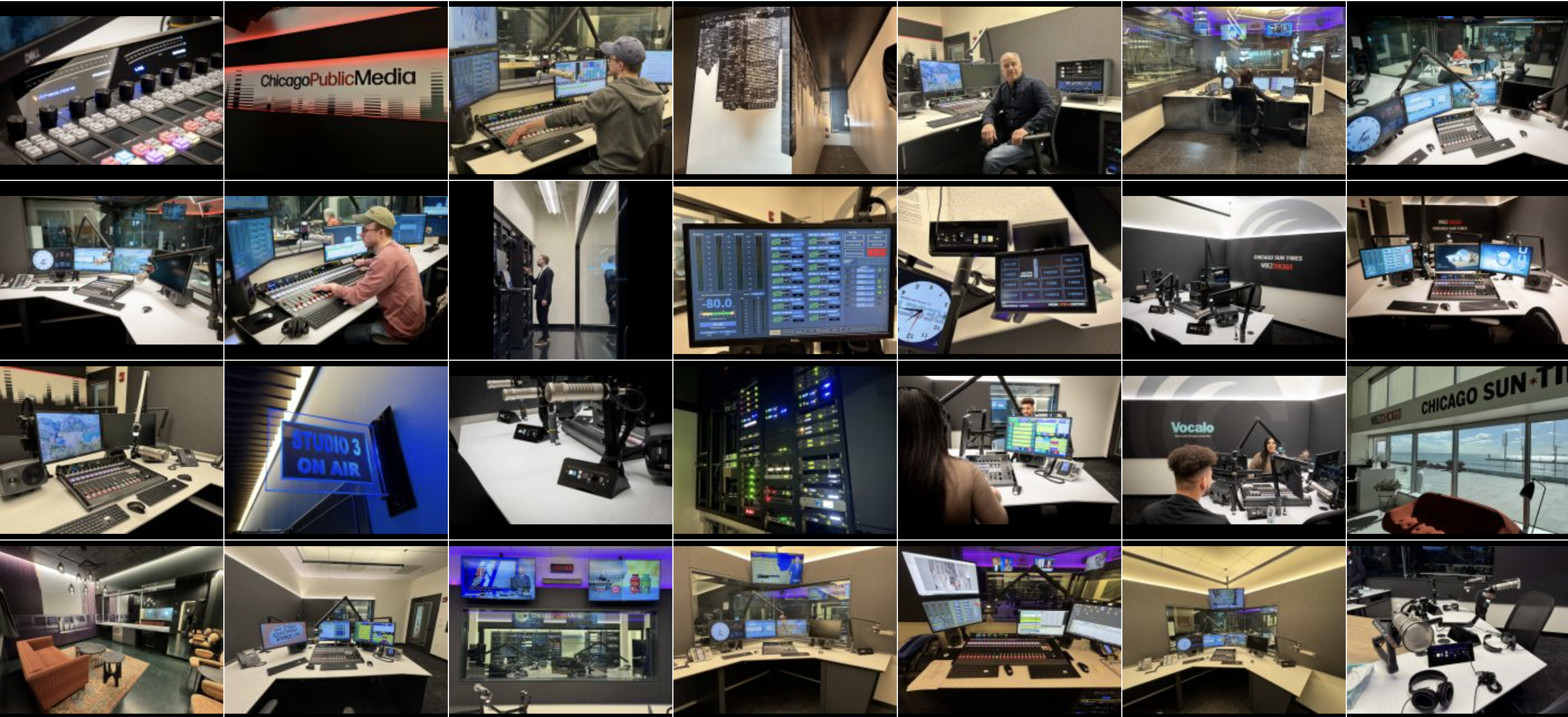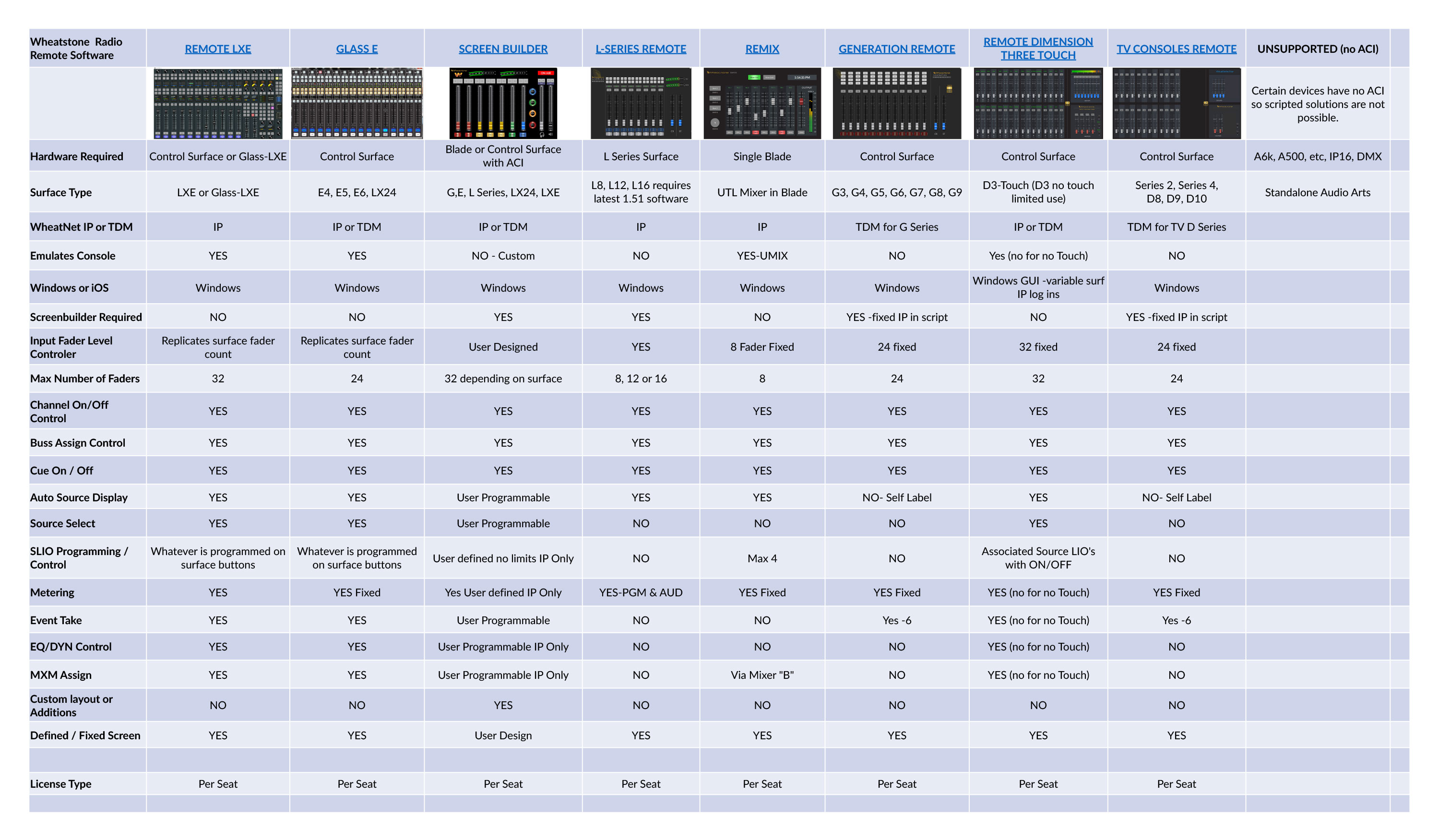
WHEAT:NEWS May 2024 Volume 15, Number 5
EXTREME STUDIO MAKEOVER
If you think changing the tires on your car while driving down the freeway is impossible, try building new studios in place.
It’s never cut and dried, especially if the build is for Chicago’s 24-hour NPR news/talk station and the place happens to be on Navy Pier on what is essentially a floating barge at the edge of Chicago.
“The biggest challenge besides getting all the equipment and construction materials into the space was ‘what must we do to stay on the air?’” said Stephen Wright, Vice President of Technology and Operations for Chicago Public Media.
To his credit, the steady stream of live shows, news and music never stopped at Chicago Public Media’s WBEZ 91.5, not for teardown, not for new walls, not for wiring or assembling or networking, and certainly not for hoisting equipment and materials from the second-story dock off Navy Pier and into a third-story window. The staff worked through it all, as did technology partners with Inrush Broadcast Services, SCMS and our team at Wheatstone.
Throughout the next year, the studio core footprint was stripped down to the studs and studios were right-sized for purpose and function. Better sight lines between studios, greater usability of each studio, and a standard studio footprint that flowed from one workspace to the next were the primary goals. It involved moving walls, ripping out layers of wiring infrastructure, and designing a modern WheatNet IP audio networked studio facility from the ground up—literally!
In order to bring Wheatstone gear and construction material from the second-story dock up to the third floor, WBEZ’s general contractor Skender built a temporary platform and used a lull to hoist pallets from the dock and up through a large opening created by removing several windows. “I think it worked better than a freight elevator,” commented Wright.
Meanwhile, staff worked out of temporary studios. Using parts and pieces, the WBEZ engineering team built a studio downstairs on the first floor where they were able to move the main talk studio. WBEZ also had edit booths on the fourth floor, one of which they rebuilt into a WheatNet IP anchor booth. “We had our entire broadcast operation separated over three floors. We had master control on the third floor, our talk studio on the first floor and our anchor studio on the fourth floor,” explained Wright, adding that without sight lines the staff used Google Meet as a temporary fix.
“It was challenging, but it allowed demolition and construction to begin without interference or noise affecting our ability to broadcast,” he said.
The plan called for eight LXE console surfaces in main on-air rooms and master control; four L Series console surfaces in production rooms; 42 talent stations for talk positions throughout; and 63 I/O Blades with hundreds of channels of GPI/O and more than 1,000 crosspoints connecting all 12 studios and dozens of workflows. (We’ll tell you more about our working plan for WBEZ in the next issue of Wheat News.)
WBEZ cut over to the main WheatNet IP studio in December 2023 and went live with the remaining 11 studios over the next month, capping off almost two years of planning and preparation.
Footnote: Behind the camera in these photos are Bob Martin, a regular WBEZ listener and a longtime friend and associate of Wheatstone, and his son Nick Gerber, a videographer who spent the day touring the new WBEZ facility.
WE NOW TALK TRANSMITTER
Transmitter sites are getting smarter as IP connectivity gets better.
We know this to be true because our Blade 4 I/O units have been streaming audio from the studio to the transmitter site over the public internet for some time, thanks to the Blade 4’s built-in audio codecs and the recent addition of RIST connectivity. Connecting multiple studios and transmitter sites together in this way makes it possible for our customers to automatically failover from one transmitter to another at the first detection of silence during disasters such as hurricanes or fires, for example.
Still, to really talk transmitter, we’ll need an MPX over IP transporter to complete the FM air chain.
Enter Wheatstone SystemLink®.
SystemLink transports the FM MPX + HD/DAB signal across IP links of any capacity, whether as uncompressed or via optional audio codec such as μMPX. It passes the MPX and all subcarriers as well as HD or DAB audio aligned with stereo FM from an audio processor or from our Wheatstone Layers® FM software on a server.
Layers FM, as you will recall, is our audio processor software that can run on a cloud or be hosted on a local server. SystemLink transports FM MPX + HD/DAB out of the Layers FM audio processor from the server or cloud data center to the transmitter, which opens up a few new options for shuffling around content. Among them: being able to consolidate syndicated shows along with programming for one or more stations in a cloud as a backup or on a local server for distribution to one or more transmitter sites over IP.
Any IP link will work. Compressed or uncompressed audio, SystemLink uses RIST for realtime error correction for the lowest latency possible across the public internet. Accessible through an HTML5 browser interface, SystemLink is available for our audio processors and compatible with existing STLs and audio processors. It supports μMPX, analog MPX, and MPX over AES.
It's a smart little addition to the broadcast chain that we think will have big implications.
THIS IS ONE SHARP BLADE
We’re referring to our Blade 4, of course. We’ve been talking to quite a few broadcasters who are adding Blade 4s to their transmitter sites for automatic failover between sites. Here are more uses for our sharpest Blade yet.
With built in audio codecs, processing, routing and control as well as audio clip players for emergency announcements, our Blade 4 can be used to:
- Run a temporary remote feed into the studio quickly and easily. Just select one of the audio codecs built into the Blade 4. Each Blade 4 has two channels of encode/decode codecs such as Opus and uses RIST connectivity for secure, reliable and the fastest transport possible over just about any IP link.
- Route audio through a separate AES67 device at the ballpark or other venue. The Blade 4 has AES67 multichannel support and packet timing adaptability to interoperate with a wide range of environments and gear, from pro equipment to other AoIP networks.
- Run metering and software apps directly on the Blade 4 unit itself. Like the Blades before it, the Blade 4 has a built-in operating system. But this one is much faster and more capable. You can run useful AoIP applications from the front panel, or on a 4K monitor that you can plug into the back of the Blade 4.
This is one sharp Blade, and the only AoIP I/O unit that includes in 1RU audio processing, codecs, mixing, routing, control and even a built-in OS. Email us at [email protected] to let us know what other uses you’ve discovered with the Blade 4.
HOT DOG! WHAT AN NAB.
Diversity and inclusion, now there’s a conversation we never thought we’d have at an NAB show.
Every NAB is a turning point of sorts, but this year we happened to turn the corner on two very different studio trends: virtualization and thin technology (hence, our Best of Show awards). Our new DML digital consoles are uber-thin, yes, but not exactly the poster child for virtualization. That distinction is reserved for our Wheatstone Layers® Software Suite running on a local server or cloud.
Imagine it then: a completely virtualized FM air chain with streaming, processing and MPX over IP running on AWS in one booth display and just a few steps away, a fully self-contained digital console as thin as most laptops.
If you spent any time in our booth, it was hard to miss the obvious.
Broadcasters and broadcast operations are a diverse lot. Not everyone is in the same place or even on the same path. But we’re all moving forward—some by replacing old analog boards with modern digital consoles, some by virtualizing on a local server, and still others by doing any variation of these two.
It doesn’t get more diverse and inclusive than that, and we’re not the only ones who noticed. Both our Layers virtualization technology with MPX over IP transporter and our new Audioarts DML consoles won a Radio World Best of Show 2024 award. And our Strata Virtual Mixer for mixing anywhere, for any purpose won a TV Technology Best of Show 2024.
Every year, we walk away from the NAB show feeling grateful to an industry that recognizes our hard work. This year we take home not only that sense of accomplishment but also an appreciation for the many unique ways that broadcasters are moving forward into the future. We especially appreciate all our friends who gathered at Camp Wheat to share some good BBQ with us and to unwind from a busy Friday and Saturday on the convention floor. We kept the Ubers and Lyft drivers busy! Last count, there were more than 150 people gathered at Camp Wheat at one time.
PUSHING THE RIGHT BUTTONS AT WBEZ
Shown above is Inrush’s Shaun Dolan pushing buttons on the SS-8, a scriptable button panel added to WBEZ’s LXE console surfaces to provide intercom and other functions unique to their operations. With this, anchors can page through options to talk to callers, reporters, guests and hosts in other studios.
Inrush integrators programmed the OLED buttons to run scripts locally on the panel itself -part of the distributed intelligence built into WheatNet IP. Intercoms are routed intelligently based on state of the studio. If the microphone is on, the intercom shows up in the headphones. If the mic is off, it shows up in the cue speaker.
The SS-8 panels have delay by way of an Eventide unit in the rack room. Certain WBEZ studios can go on-air through a secure ARM (access rights management) protocol, all of which is programmed into the SS-8 button panel.
AOIP ISN’T FOR EVERYBODY. BUT DIGITAL IS.
Got a serious case of FOMO (fear of missing out) when it comes to AoIP? We’re going to let you in on a little secret.
AoIP isn’t for everybody.
If yours is a small operation, you might be better off keeping your studio routing and spending your money on replacing that 20-year-old console with a newer digital console instead.
You will get modern necessities like USB and Bluetooth and your sound will improve, as is the case with our new Audioarts DML digital consoles. But you’ll miss out on all that business of mapping out the topology, tearing out the old wiring, and having to buy an Ethernet switch.
We can suggest several good console options. But whatever console you go with, make sure it’s digital because while AoIP isn’t for everybody, we can assure you that digital is. Here’s what to look for:
- Make sure I/O is included. Some console surfaces have additional mix engines that need to be added, and that’s going to cost you a few thousand more. Digital consoles like our new 8 channel and 12 channel DML consoles include I/O. Also, because everything in the studio is digital these days, just like the rest of the world, make sure your new digital console has enough AES3 RJ45 inputs.
- Make sure it has USB for connecting into automation, tablets and phones. Bluetooth would also be useful for quickly putting a caller on-air.
- Finally, you’ll need a way into the AoIP world, if only to make quick routing changes. An optional app is available for our new Audioarts DML consoles that gives you WheatNet IP audio output, for example.
- External power supply is a good idea. You’ll thank us for this. Having an external power supply eliminates heat buildup inside the console and gives you a little bit more of a safety margin.
Audioarts Engineering is a sister brand to Wheatstone and includes studio consoles, furniture, and talent stations. Audioarts and Wheatstone products are engineered, manufactured, and supported under the same roof in Wheatstone’s New Bern, North Carolina, factory.
Interesting Links:
The Wheatstone online store is now open! You can purchase demo units, spare cards, subassemblies, modules and other discontinued or out-of-production components for Wheatstone, Audioarts, and VoxPro products online, or call Wheatstone customer support at 252-638-7000 or contact the Wheatstone technical support team online as usual.
The store is another convenience at wheatstone.com, where you can access product manuals, white papers and tutorials as well as technical and discussion forums such as our AoIP Scripters Forum.
Compare All of Wheatstone's Remote Solutions
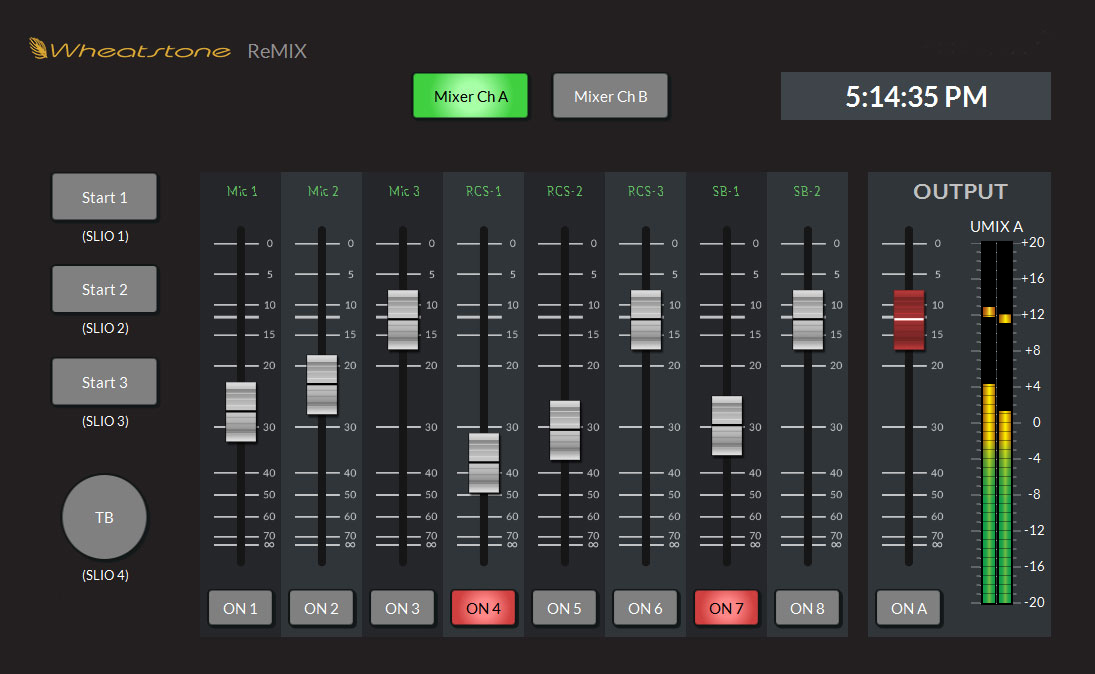 We've got remote solutions for virtually every networkable console we've built in the last 20 years or so. For basic volume, on/off, bus assign, logic, it's as easy as running an app either locally with a good VPN, or back at the studio, using a remote-access app such as Teambuilder to run.
We've got remote solutions for virtually every networkable console we've built in the last 20 years or so. For basic volume, on/off, bus assign, logic, it's as easy as running an app either locally with a good VPN, or back at the studio, using a remote-access app such as Teambuilder to run.
Remote Solutions Video Demonstrations
Jay Tyler recently completed a series of videos demonstrating the various solutions Wheatstone offers for remote broadcasting.
Check out the chart below, and/or click here to learn more on our Remote Solutions web page.
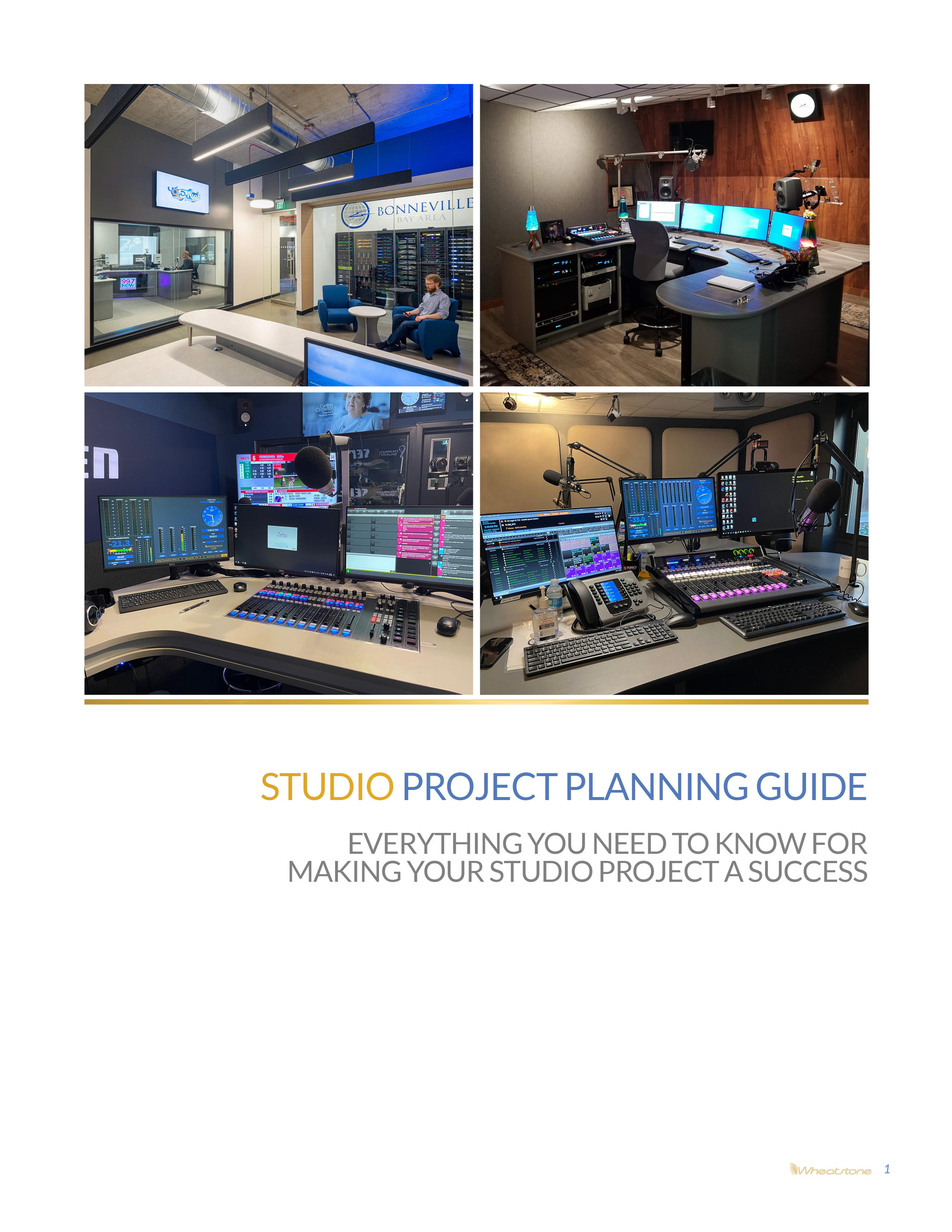 Studio Project Planning Guide
Studio Project Planning Guide
EVERYTHING YOU NEED TO KNOW FOR MAKING YOUR STUDIO PROJECT A SUCCESS
Have you seen the latest smart studio trends? Discover expert tips, surprising uses for AoIP Blades, 6 common studio gotchas, and how to be aware of little expenses. A must-read before you begin your studio project.
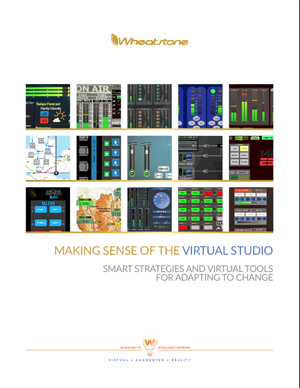 Making Sense of the Virtual Studio
Making Sense of the Virtual Studio
SMART STRATEGIES AND VIRTUAL TOOLS FOR ADAPTING TO CHANGE
Curious about how the modern studio has evolved in an IP world? Virtualization of the studio is WAY more than tossing a control surface on a touch screen. With today's tools, you can virtualize control over almost ANYTHING you want to do with your audio network. This free e-book illustrates what real-world engineers and radio studios are doing. Pretty amazing stuff.
 IP Audio for TV Production and Beyond
IP Audio for TV Production and Beyond
WHAT YOU NEED TO KNOW ABOUT MANAGING MORE CHANNELS, MORE MIXES, AND MORE REMOTE VENUES
For this FREE e-book download, we've put together this e-book with fresh info and some of the articles that we've authored for our website, white papers, and news that dives into some of the cool stuff you can do with a modern AoIP network like Wheatstone's WheatNet-IP.
Got feedback or questions? Click my name below to send us an e-mail. You can also use the links at the top or bottom of the page to follow us on popular social networking sites and the tabs will take you to our most often visited pages.


